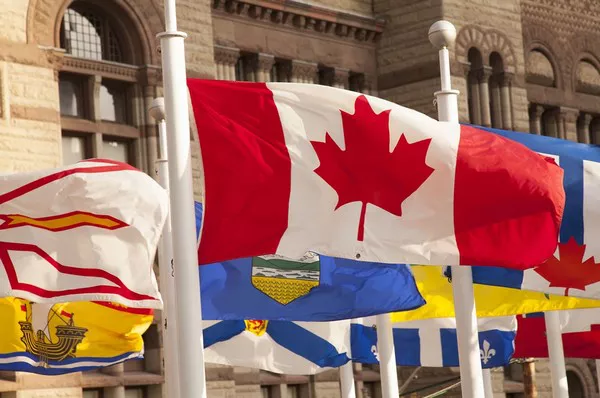Currency evolves over time, with new designs, enhanced security features, and updated materials. This progression often leads to questions about the validity of older bills still in circulation. In Canada, the $20 bill has seen several iterations, raising concerns among consumers and collectors alike about the usability of older versions. This article delves into the legal status, practicality, and considerations surrounding the use of old $20 bills in Canada.
The Evolution of Canadian $20 Bills
Historical Overview
The Canadian $20 bill, part of the country’s legal tender, has undergone multiple redesigns since its inception. Each redesign aims to enhance security, commemorate significant events or figures, and modernize the bill’s appearance.
The Journey Through the Decades
1935 Series: The Bank of Canada issued its first $20 bill in 1935, featuring a portrait of Princess Elizabeth (now Queen Elizabeth II).
1954 Series: This series introduced a new portrait of Queen Elizabeth II, known for the “Devil’s Head” variety, due to a pattern in her hair.
1969-1979 Series: Featuring Queen Elizabeth II on the front, this series introduced multi-colored backgrounds.
1986-1991 Birds of Canada Series: Highlighted the common loon and updated the portrait of Queen Elizabeth II.
2001-2004 Canadian Journey Series: This series featured the theme of Canadian journeys and innovations.
2011-2013 Polymer Series: Introduced polymer material for enhanced durability and security, featuring a holographic stripe and transparent elements.
Security Features and Design Changes
With each new series, the Bank of Canada incorporated advanced security features to combat counterfeiting. These features include watermarks, holograms, raised printing, and transparent windows, particularly in the polymer series.
Legal Status of Old $20 Bills
Bank of Canada’s Policy
The Bank of Canada’s policy regarding old currency ensures that all banknotes issued since 1935 retain their legal tender status. This means that, theoretically, you can use any $20 bill issued by the Bank of Canada at face value.
Legal Tender Status
What is Legal Tender?
Legal tender is the money that must be accepted if offered in payment of a debt. In Canada, legal tender consists of coins issued by the Royal Canadian Mint and banknotes issued by the Bank of Canada.
Old Bills in Circulation
While old $20 bills are technically still legal tender, their acceptability in day-to-day transactions can vary. Some retailers and financial institutions might be hesitant or refuse to accept outdated currency due to unfamiliarity or concerns about authenticity.
Practical Use of Old $20 Bills
Everyday Transactions
In everyday scenarios, using old $20 bills can be challenging. While they are legal tender, businesses are not legally obligated to accept them. This situation is more pronounced with older bills from series no longer widely recognized by the public.
Retailer and Consumer Experiences
Retailers may refuse old bills to avoid potential counterfeits or the inconvenience of verifying authenticity. Consumers might also face difficulties, particularly if the bills are from significantly outdated series, causing confusion or suspicion.
Banking and Financial Institutions
Depositing and Exchanging Currency
Most banks and financial institutions in Canada will accept old $20 bills for deposit or exchange. This process is straightforward, as banks can verify the authenticity of old bills and facilitate their return to the Bank of Canada for replacement with current currency.
Practical Tips for Consumers
Visiting a Bank Branch: Take old bills to a bank branch where they can be verified and exchanged.
Currency Exchange Services: Some currency exchange services will accept old bills and provide newer ones in return, often for a fee.
Bank of Canada: Contacting the Bank of Canada directly can provide information on how to handle large quantities of old bills or particularly rare series.
Collectors and Historical Value
Collectibility of Old $20 Bills
Old $20 bills hold significant value for collectors, particularly those from series with unique designs, printing errors, or limited circulation. The numismatic community values these bills based on condition, rarity, and historical significance.
See Also: Canadian Dollar vs Japanese Yen: Which Is More Worth?
Factors Influencing Collectible Value
Condition: Bills in mint or uncirculated condition fetch higher prices.
Rarity: Limited print runs or series with few surviving examples are more valuable.
Historical Context: Bills tied to significant historical events or changes in design are highly prized.
Selling and Buying Old Bills
Collectors can buy or sell old $20 bills through various channels, including online auction sites, numismatic dealers, and currency shows. It’s crucial to authenticate and appraise bills accurately to determine their market value.
Legal and Practical Considerations
Legal Framework
Currency Act and Bank of Canada Act
The Currency Act and the Bank of Canada Act govern the issuance and legal status of banknotes in Canada. These laws ensure that all issued notes retain their face value, even as new designs are introduced.
Practical Advice for Consumers
Handling Old Currency
Verification: Before using old $20 bills, verify their authenticity through a bank or trusted financial institution.
Exchange for New Bills: Consider exchanging old bills for new ones to avoid issues in daily transactions.
Education: Educate yourself and others about the legal status and acceptance of old currency to prevent misunderstandings.
Conclusion
While old $20 bills remain legal tender in Canada, their practical use in everyday transactions can be complicated by issues of acceptance and verification. For those with old currency, the best approach is often to deposit or exchange them at a bank. Collectors can also find significant value in old bills, especially those with historical significance. Understanding the legal and practical considerations surrounding old $20 bills ensures that Canadians can navigate their use and potential value effectively.
Related Topics:
- Why is CAD Losing Value?
- Who Benefits from a Weak Canadian Dollar?
- Is it a Good Time to Buy Canadian Dollars?


